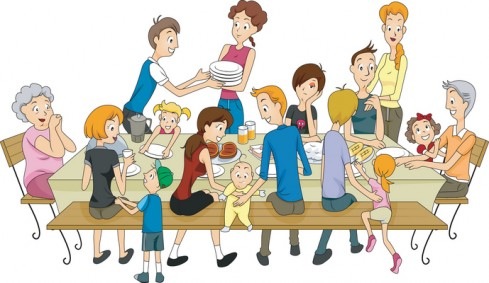 Planning on eating with seven friends? You might eat 96% more! No joke. We tend to eat more and for a longer period of time when we’re with other people compared to when we eat alone.
Planning on eating with seven friends? You might eat 96% more! No joke. We tend to eat more and for a longer period of time when we’re with other people compared to when we eat alone.
Why? Perhaps it’s because we mindlessly nibble while someone else talks. Or maybe it stems from the good manners learned in fifth grade about eating what’s put in front of you. Or perhaps we’re just having fun and enjoying great food. We do tend to stay at the table longer when we’re with others and the longer we stay at the table, the more we eat.
Losing Track
Friends and family can absolutely influence how much we eat. Sometimes we can get so involved in conversation that any monitoring of what pops into our mouths completely disappears. Think about it — have you ever looked down at your plate and wondered where all the cookies went or how you managed to work your way through the mile high dish of pasta or the four pieces of pizza? How many tastes did you take of everyone else’s meal and dessert? Those tastes aren’t like invisible ink — the calories in them count, too.
Who Sets the Pace?
We tend to mimic our table companions. They eat fast, we eat fast. They eat a lot, we eat a lot. Ever wonder why some families or couples are either all overweight or all slim? As Brian Wansink, PhD says in his book, Mindless Eating, “birds of a feather eat together.”
How Much More Do We Eat When We Eat With Others?
Wansink reports on a study that shows how strong the tendency is to increase how much we eat when we eat with others.
Compared to eating alone we average:
- 35% more when eating with one other person
- 75% more with four people at the table
- 96% more with a group of seven or more
A Different Eating Pattern When We’re With Others
The pattern of eating more when we’re in larger groups is common in adults. One reason is something called “social facilitation,” or the actions created by the stimuli that stem from the sight and sound of other people doing the same that that you’re doing. When you eat in groups social facilitation can help override the your brain’s normal signals of satiety.
Things To Think About
- Who are eating with – and why? If you just want to have a good time and don’t care about how much you eat, go ahead and eat with a big group. The likelihood is that you won’t pay much attention to what or how much you eat.
- If you want to be careful about what and how much you eat, think about eating lunch with your salad friends rather than the pepperoni pizza group.
- You tend to adjust your eating pace to that of your companions. Try sitting next to the slow eaters rather than the gobblers if you’re trying to control how much goes into your mouth.